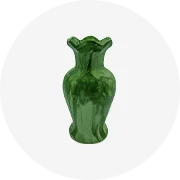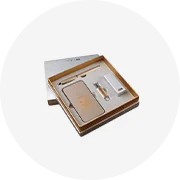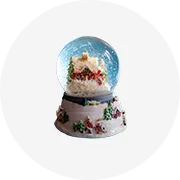The term decorative suit of armor conjures images of chivalrous knights and the grandeur of medieval times. These ornamental ensembles are not just replicas but embody the artistry and craftsmanship of an era long gone. A decorative suit of armor is a full-body ensemble that replicates the protective gear worn by knights and warriors during the medieval period. These suits are often crafted with meticulous attention to detail, aiming to mirror the historical armor used in battles and ceremonies.
Types and Characteristics of Decorative Suits of Armor
Within the realm of decorative suits of armor, there exists a rich variety, each with distinct characteristics that appeal to different historical periods and aesthetics. The 15th Century Combat Full Body Armour is designed with functionality in mind, featuring articulated joints and a robust appearance. The Spanish Knight Armor Suit, embellished with ornate engravings and a distinctive helmet, reflects the cultural heritage of Spain's chivalric past. The Crusader Knight Suit of Armor, adorned with religious insignia, evokes the fervor of the Crusades. Collectors and enthusiasts may also find specialized suits such as the Templar Cross Wearable Full Body Combat Suit, which is not only a decorative piece but also a symbol of the Templar's historical legacy. Each type of armor is a representation of the era it hails from, offering a tangible connection to the past for collectors and history aficionados alike.
Structure and Operation of Decorative Suits of Armor
The decorative suit of armor is a marvel of historical engineering, with each component playing a crucial role in its overall appearance and function. The helmet, whether it's a visored bascinet or a grand helm, is designed to protect the head while also serving as a striking centerpiece. The breastplate is not only a defense against frontal attacks but also shaped to project an imposing presence. Gauntlets are articulated to allow hand movement, and greaves protect the legs while complementing the suit's design. The assembly of these components is a testament to the armorer's skill, with each piece fitting seamlessly together to create a cohesive and majestic whole. The operation of these suits, especially if they are wearable, involves a complex system of straps and buckles that allow the armor to move with the body, demonstrating the ingenious design of medieval armorers.
Materials and Benefits
The materials chosen for a decorative suit of armor are pivotal in achieving both an authentic look and longevity. Historically accurate suits are typically forged from steel or iron, materials known for their durability and strength. These metals are capable of withstanding the rigors of display and can be worked into the intricate details that characterize medieval armor. Gold plating and brown patination are applied to give the armor a distinguished appearance, suggesting nobility and age. The benefits of these materials are manifold; they ensure the armor's presence as a centerpiece in any room or collection, and their resilience guarantees that the armor can be appreciated for generations to come.
Business Usages and Applications
The decorative suit of armor has found its place in various business settings, transcending its historical roots to become a symbol of prestige and cultural appreciation. In the hospitality industry, such suits can be seen gracing the lobbies of grand hotels, setting a tone of elegance and grandeur. Corporate offices may use them to underscore themes of strength and resilience in business. In the entertainment and event industry, these armors are indispensable in creating authentic medieval themes, adding depth and realism to the settings. They also serve educational purposes in museums, where they stand as three-dimensional textbooks, offering insight into the technological advancements and societal norms of the medieval period.
Functions and Tasks
Despite their primary role as decorative items, decorative suits of armor are imbued with a sense of functionality. They can be used in historical reenactments, providing participants with a realistic and tangible connection to the past. In educational settings, they serve as interactive tools that can engage and inform students about medieval life and warfare. The armor's design allows for a range of motion, making it suitable for live demonstrations of medieval combat techniques, thus serving both an educational and entertainment function.
Features and Unique Selling Points
The decorative suit of armor boasts features that set it apart from mere replicas. The attention to detail in the replication of historical designs, the use of traditional materials, and the craftsmanship involved in the creation of each suit are unique selling points. Customization options, such as incorporating specific historical motifs or family crests, offer personalization that appeals to collectors and those looking to connect with their heritage. The armor's ability to be both a display piece and a wearable costume adds versatility to its appeal, making it a unique addition to any collection or display.
Benefits and Positive Outcomes
The acquisition of a decorative suit of armor brings with it numerous benefits. For the individual, it is a statement piece that adds grandeur to personal spaces and serves as a conversation starter. For businesses, it can elevate the ambiance of a space, reflecting a sense of history and luxury. The armor also serves educational purposes, offering a hands-on experience that can enhance learning and appreciation for history. The psychological impact of such a piece cannot be understated; it is a symbol of endurance and craftsmanship, inspiring those who view it.
How to Choose the Right Decorative Suit of Armor?
Choosing the right decorative suit of armor involves considering the space it will occupy, the desired historical period it represents, and the level of craftsmanship. Factors such as the authenticity of design, quality of materials, and the reputation of the manufacturer are crucial. It is important to consider the suit's compatibility with the intended display environment, whether it is to be a central piece in a room or part of a larger collection.
How to Maintain and Preserve Your Decorative Suit of Armor?
Proper maintenance of a decorative suit of armor is essential for its preservation. Regular cleaning to remove dust and prevent tarnish, along with occasional polishing, will keep the armor in pristine condition. It is also advisable to conduct periodic inspections to ensure that the armor's structural integrity remains intact, especially if it is a wearable piece.
How to Ensure Authenticity in Your Decorative Suit of Armor?
Authenticity in a decorative suit of armor is ensured through careful examination of the craftsmanship, materials used, and historical accuracy of the design. Purchasing from reputable sources on Alibaba.com, where sellers are known for their quality and authenticity, can provide assurance to buyers. Detailed product descriptions and high-resolution images offer an in-depth look at the armor, aiding in the decision-making process.
In conclusion, a decorative suit of armor is not just a piece of historical replica; it is a work of art that reflects the grandeur of the past. Alibaba.com offers a diverse collection of these ornate armors, catering to the tastes of different audiences and the requirements of various decorative themes.



































 浙公网安备 33010002000092号
浙公网安备 33010002000092号 浙B2-20120091-4
浙B2-20120091-4